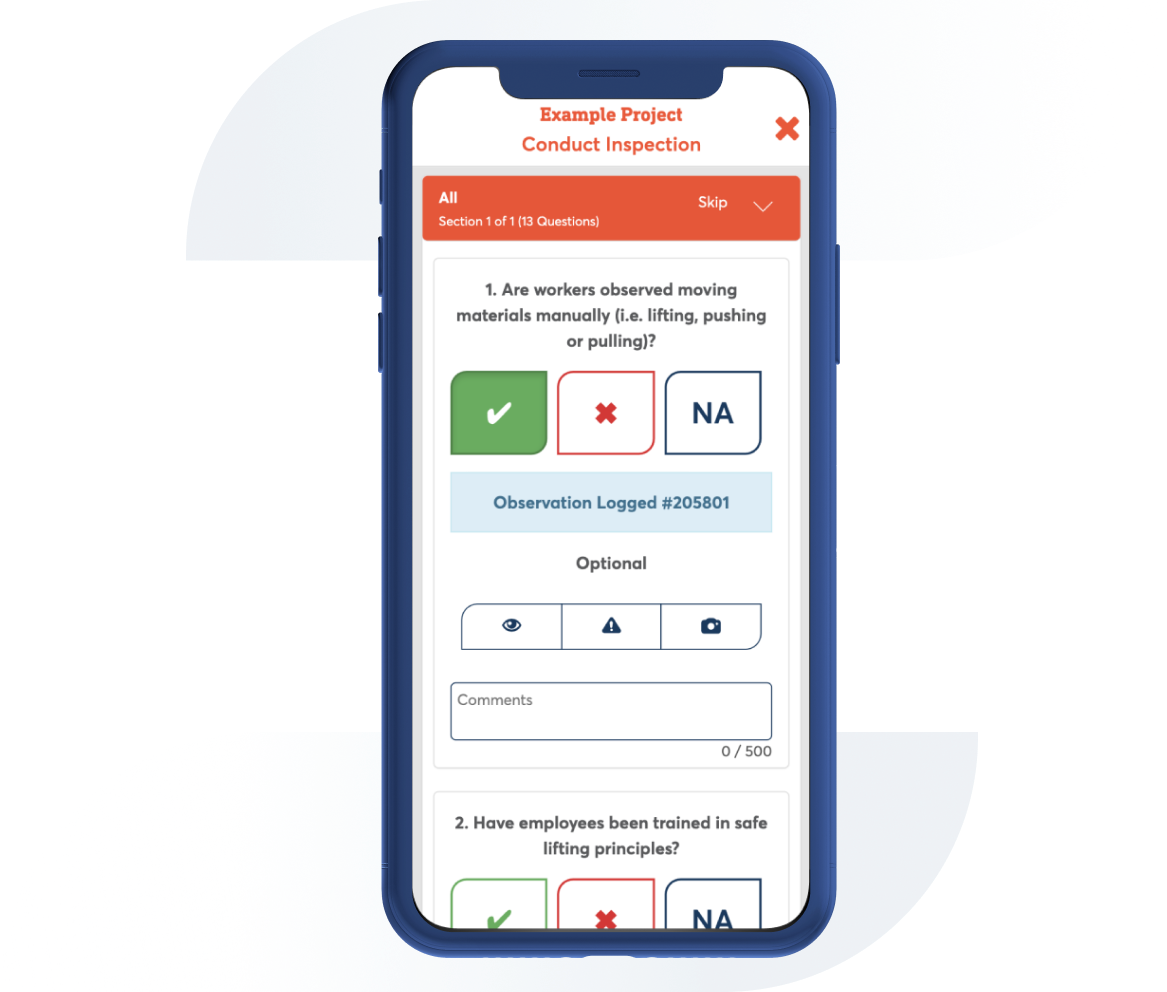Skid Steer Operator Evaluation
Contributor: Safesite HQ Jurisdiction: OSHA
Use this form to evaluate a Skid Steer Operator's proficiency. Evaluate each of the following operator behaviors for pass/fail and provide a comment when a behavior fails.

Template Preview
1. Date
2. Operators Name
3. Equipment
1. Follow Operator’s Daily Checklist.
Actions
2. Look for damage.
Actions
3. Document all findings on the Operator's Daily Checklist.
Actions
1. Square up on the center of the load.
Actions
2. Stop with the fork tips or frontend bucket about 1 foot from the load.
Actions
3. Clear personnel from the area near the load.
Actions
4. Level the forks or frontend bucket; then slowly drive forward until the load contacts the carriage.
Actions
5. Lift the load carefully and smoothly until it is clear.
Actions
6. Tilt the mast back slightly to stabilize the load.
Actions
7. Look over both shoulders.
Actions
8. After out and stopped, lower the load to travel height.
Actions
1. Do not raise or lower the load and forks while traveling.
Actions
2. Maintain a safe speed.
Actions
3. Observe all traffic rules, warning signs, floor load limits and overhead clearances.
Actions
4. Keep arms and legs inside the Skid Steer.
Actions
5. Follow other vehicles at safe distance.
Actions
6. Slow down when cornering.
Actions
7. Use the horn to alert others.
Actions
8. Travel with the load facing uphill while on a ramp or incline.
Actions
9. Stop smoothly.
Actions
1. Make sure there is sufficient clearance for the load.
Actions
2. Clear personnel from the area near the load.
Actions
3. Square up to the location; then stop about 1 foot away.
Actions
4. Raise the load to placement level.
Actions
5. Move slowly forward.
Actions
6. If the load is on a pallet or ground, lower it into position and lower the forks or bucket further.
Actions
7. Look over both shoulders before backing out.
Actions
8. Back straight out until the forks or bucket have cleared.
Actions
9. Lower the forks or bucket to traveling position.
Actions
1. Fully lower the forks or bucket to prevent trip hazards.
Actions
2. Neutralize the controls.
Actions
3. Set the brakes.
Actions
4. Turn off the power.
Actions
5. If parked on an incline, block the wheels.
Actions
6. Park only in authorized areas.
Actions
1. Engine off.
Actions
2. Fire extinguisher nearby.
Actions
3. Proper personal protective equipment worn.
Actions
4. Safe fueling and battery recharging procedures followed.
Actions
5. Spills cleaned up immediately.
Actions
1. Evaluators Name
2. Based on my evaluation, the operator has successfully completed the evaluation and is qualified to operate the piece of equipment listed.
Actions
3. Comments:

Can't find what you are looking for?
